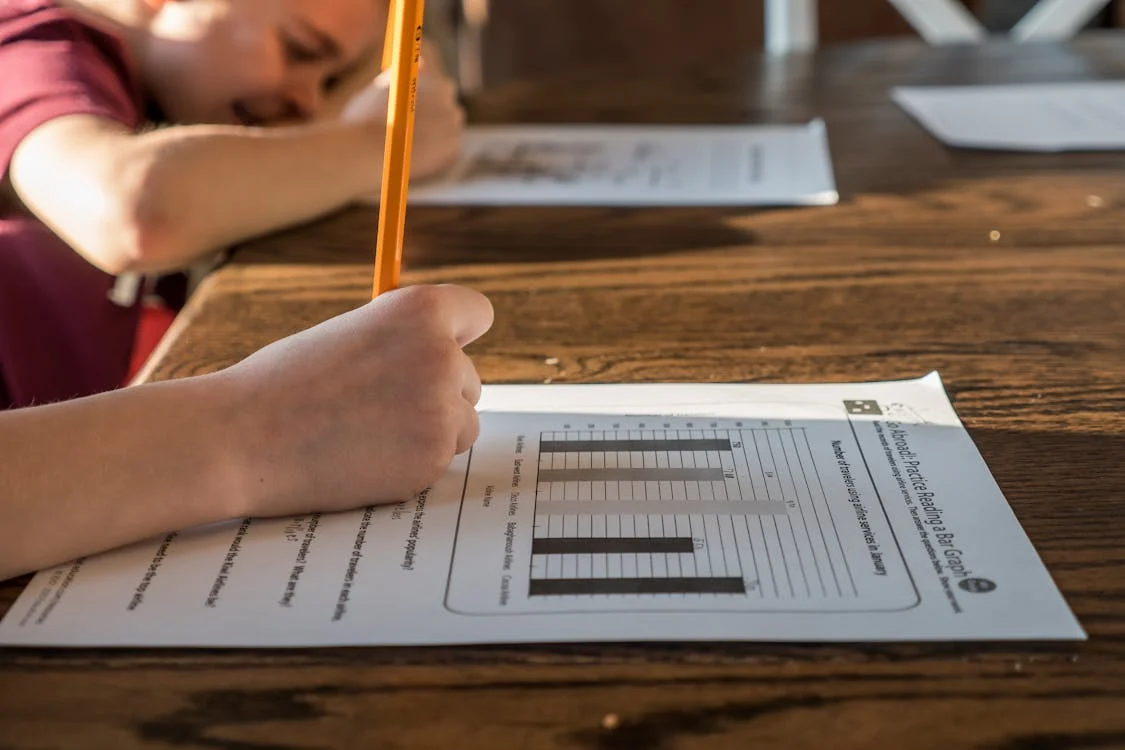
如何提高小六会考(PSLE)的图文信息阅读理解能力
图文信息阅读理解(Visual Text Comprehension)是一项在当今教育环境中非常重要的技能,特别是对于准备小六会考(小学离校考试、PSLE)的学生。本指南全面探讨了什么是图文信息阅读理解、它在评估中的重要性,以及可以帮助提升您孩子图文信息阅读理解能力的有效策略,帮助家长支持孩子技能的提升。
什么是图文信息阅读理解
图文信息阅读理解涵盖了多种图文表现形式,通常伴随书面或口头语言。例子包括海报、广告、图表、图解、地图和说明手册。这些元素通过图文的方式传达信息、观点或者消息,通常与书面内容相辅相成,强化理解。
图文信息阅读理解的主要目的
图文信息阅读理解的主要目的是以图文方式传达信息。与单独的书面文本不同,图文元素能够吸引观众的注意,突出关键点,并通过视觉和语言线索帮助读者更好的理解。
图文信息阅读理解的重要性
掌握图文信息阅读理解能力非常重要,原因包括:
1. 增强理解能力
图文信息文本通过将复杂信息以视觉形式呈现并与书面内容结合,帮助读者更好地理解。利用图片辅助文字这样的双重呈现有助于读者更有效地掌握概念。
2. 批判性思维
分析图文元素能够培养批判性思维技能,如从图像和文字中解释含义。这一过程提高了解读信息的能力,读者能从不同的角度和语境中解读信息。
3. 考试相关性
小六会考(PSLE)要求学生准确解读图文信息以回答相关问题。理解图文信息为学生解码复杂信息做好准备,这能够鼓励他们在不同语境中有效地理解和沟通,无论是在说明手册、教育环境还是日常生活中。
小六会考(PSLE)中的图文信息阅读理解
在小六会考英语考试中,图文信息阅读理解通过各种形式进行测试,例如广告、海报、图表和说明手册。这些问题评估学生解读图文信息的能力、识别关键词和理解通过图文格式及其伴随的文字传达的主题。
图文信息阅读理解技巧
掌握图文信息阅读理解需要一些策略。以下是一些有用的建议,以帮助您的孩子或您自己在这一重要技能上脱颖而出:
1. 识别关键元素
在图文信息及其附带的文字内容中识别关键词很重要。关键词通常概括了图文信息的主要思想或主题,帮助理解其目的和信息。例如,在关于环境保护的海报中,“可持续性”、“环保”和“可再生能源”等关键词突出显示了核心主题,引导读者迅速把握海报欲达到的目的。
2. 注意细节或小字
图文信息阅读理解中的小字或附属细则提供了重要的背景和附加信息。这包括免责声明、说明或可能影响图文信息解读的特定细节。例如,在产品包装上,小字通常包含使用说明、成分或安全警告,这对于消费者在做出购买决定前理解至关重要。仔细检查这些小字确保全面理解图文信息的内容和信息。
了解如何仔细阅读图文信息不仅有助于解读其明确内容,还能理解潜在的含义和意图。通过关注关键词的识别和细节的审查,我们可以提取有价值的信息,并在各种情境中对图文传达信息有更深入的理解。
回答图文信息阅读理解的策略
有效回答图文信息阅读理解需要一个结构化的方法,关注各个方面:
1. 受众考虑
理解图文信息的目标受众对解读其信息至关重要。考虑图文信息的目标群体——是儿童、成年人,还是特定人群。受众分析有助于理解图像和语言特征如何有效沟通。针对儿童的图文信息通常使用插图和简单语言来吸引年轻读者。
2. 目的分析
确定图文信息的主要目的对于准确解读其内容和信息至关重要。图文信息可以有多种目的,例如信息传递、说服、娱乐或指导。识别目的可以指导您分析视觉元素并理解它们如何支持整体信息。例如,一则广告的目的是推广产品,而公交站的海报可能旨在提高对社区活动的意识。识别这些目的有助于解码图文和附带文字背后的意图。
3. 语言分析
分析嵌入图文信息中的语言特征增强了理解和解读能力。语言特征包括标题、说明、标签或伴随图文元素的描述性词语 。这些元素提供额外的背景,澄清细节,并传达支持图文信息的特定含义。例如,说明手册中的图示标签帮助澄清每个组件的功能,确保读者理解如何有效使用产品。关注这些语言线索确保对图文内容和信息的全面理解。
4. 信息解读
解读图文信息传达的整体信息需要综合受众分析、目的识别和语言特征解读的见解。理解信息涉及把握通过图文和文本组件传达的核心思想或主题。例如,公共服务公告海报旨在通过引人注目的图文和简洁的信息提高对社会问题的意识。通过结合受众理解、目的识别和语言特征分析,您的孩子可以提炼出意图信息的重要性,并有效回答理解问题。
总结
帮助您的孩子掌握图文信息文本理解能力,以应对小六会考( PSLE、小学离校考试),需要采取全面的方法,有效地与各种图文材料互动。通过理解图文文本的具体目的——无论是教育、传达信息还是说服——以及运用图像和布局等技巧,学生可以解读含义,获得超越文字的见解。这种能力使他们能够解读图文线索,从不同角度分析信息,并清晰地解释自己的理解,提供有支持的论据。
在为小六会考做准备时,图文信息文本理解能力的考察非常重要。学生学习识别微妙细节,理解图文信息与文本元素如何协同传达意义,并有效地回应相关问题。这种方法不仅培养批判性思维能力,还增强沟通技巧,使学生能够自信地表达自己的解读。通过掌握图文信息文本理解能力,学生不仅在学业上表现优异,还能培养终身学习和在不同背景下与图文媒体互动的基本技能。帮助您的孩子练习并应用这些技能,将为他们的学业及未来的成功打下坚实基础。
访问我们关于 小六会考听力理解 和小六会考作文话题 的相关文章!!
同时,查看我们的 小六会考考试精通系列项目。
